The SeabeeGram, Volume 4, September 2021
The SeabeeGram, Volume 4, September 2021 [PDF, 2.3MB]
Museum News
The museum is now open Monday through Saturday from 10am to 4pm.
To help ensure physical distancing and a safe, comfortable experience, the number of visitors in the museum is limited and visitors are asked to follow these guidelines:
· As directed by the Department of Defense, all visitors to the museum two (2) years of age or older are required to wear a mask, regardless of vaccination status.
· Please do not enter the museum if you feel sick or have a temperature over 100 degrees.
· Exhibits requires one-way foot traffic flow.
· The STEM Bee Fun Zone is temporarily closed.
· The Seabee Museum Archive Reading Room is open to researchers Monday through Friday from 9am to 4pm (closed from 12pm-1pm for lunch). Reading Room access is by appointment only; make an appointment.
· Maximum museum capacity is 60 visitors.
· Official Navy Events and Ceremonies for groups of 50 or less; make a reservation.
· In-person tours available for groups of 10 or less; make a reservation.
For the most updated visitor information, follow the museum on Facebook or visit the museum’s website.
Exhibit Opening: In celebration of 10 years in the new museum in Port Hueneme, USNSM opened an exhibit called “Breaking Ground: Transforming the U.S. Navy Seabee Museum” on August 26, 2021. This exhibit that explores the history of the museum from its humble beginnings in 1947 through the Quonset hut years and the present day. This exhibit will be on display through 2022. Click here for more information about the exhibit.
Upcoming Family Events:
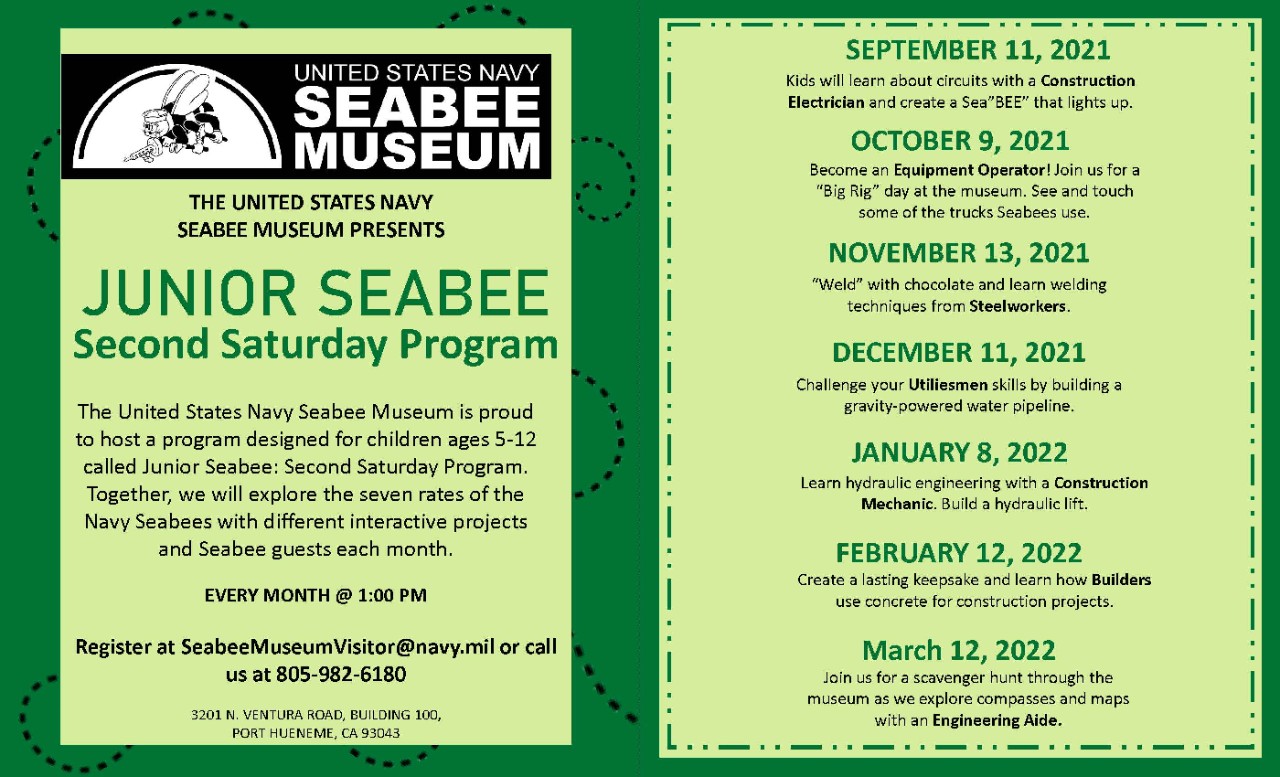
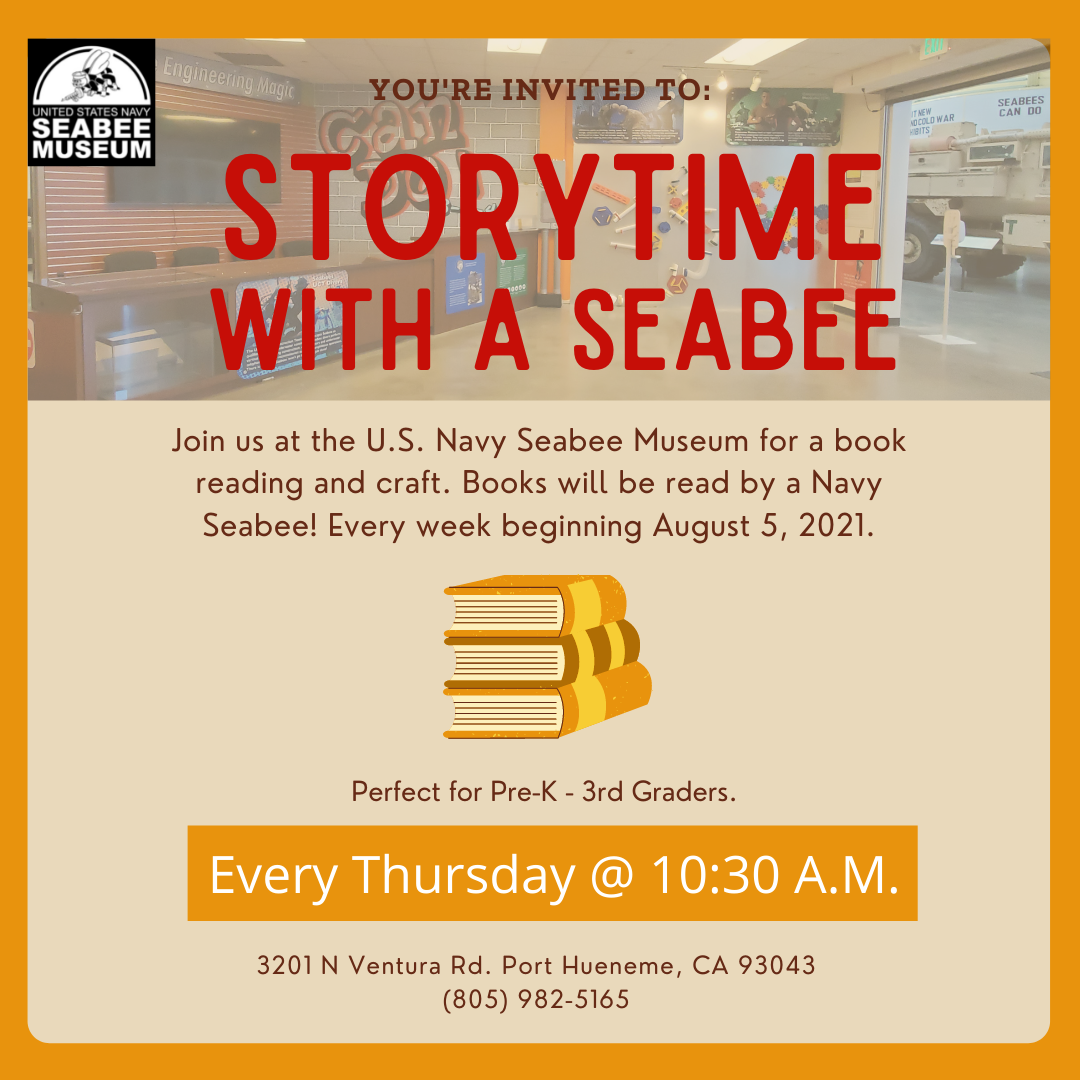
Director’s Notes
Despite only being opened limited hours, the Museum had a busy summer! More than 3,000 visitors came to the Museum including active-duty Seabees, veterans, Seabee families, and the public. The Museum also hosted a meeting of the Hosted Seabee Senior Enlisted Advisory Group. It was honor to have FORCM Del Terrell and all the NCF Command Master Chiefs at the Museum and a treat to hear many of their sea stories. It was especially profound to have them present for the opening of the “Breaking Ground” exhibit.
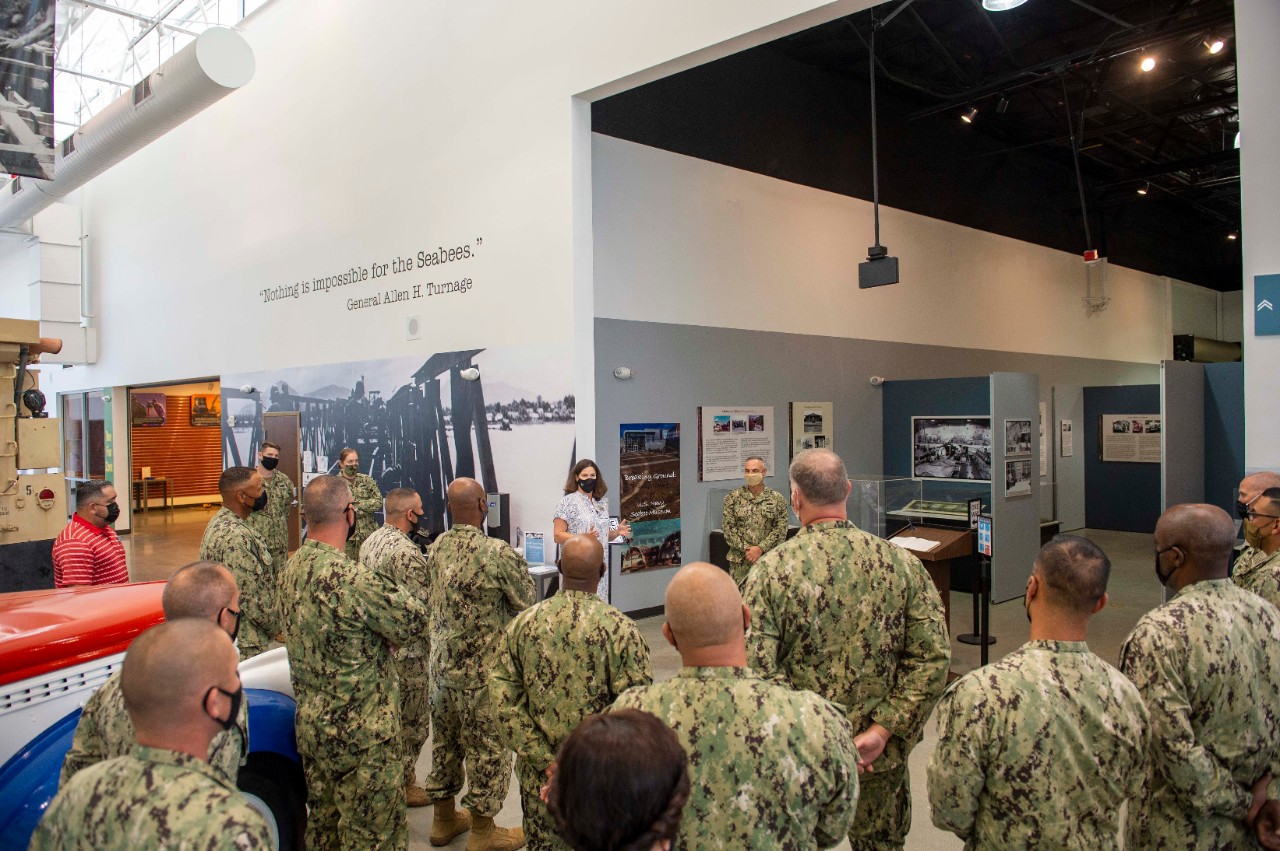
As operating hours continue to expand, the Museum’s public programs are also starting back up. In August, the Museum relaunched “Storytime with a Seabee” which has been enjoyed by both the kids and the guest Seabee readers. Later this month, the Museum will restart its “Junior Seabee Program” which will educate a new generation about the Seabee rates.
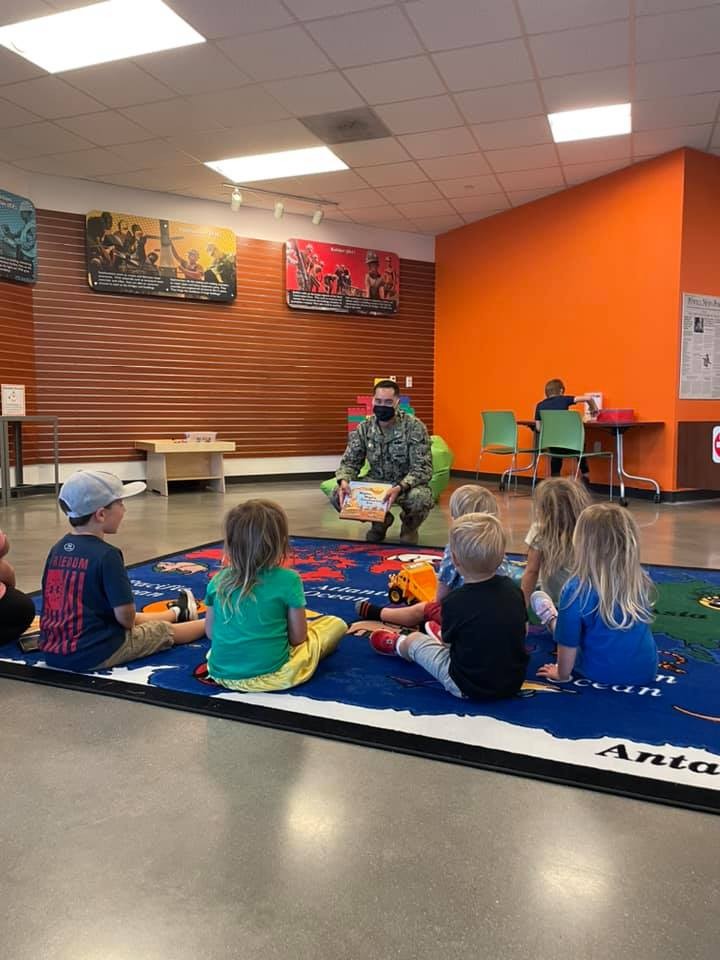
This edition of the newsletter commemorates the 30th anniversary of the construction of the base at Diego Garcia and the Seabees involvement in its development. Diego Garcia is one of the most strategically important bases to the United States and its allies. From the first reconnaissance team until today, the Seabees have played an essential role in construction and maintenance of Diego Garcia. The following article was taken from the museum’s archive. Over the years, the Museum has had professional historians, archivists, and curators who have researched and written articles about different aspects of Seabee history. The Museum is currently enhancing its digital asset management effort to make more articles like this one and other historical materials more accessible online.
Happy history hunting,
Lara Godbille, Ph.D.
Director, U.S. Navy Seabee Museum
Naval History and Heritage Command
Reindeer Station: The CEC and Seabees on Diego Garcia
One of the major projects for the Naval Facilities Engineering Command and the major project for the Seabees in the 1970s and early 1980s was the construction of naval facilities on the atoll of Diego Garcia, which was part of the British Indian Ocean Territory. Diego Garcia, one of the 52 coral atolls of the Chagos Archipelago, is located in the Indian Ocean 960 miles south of India and 7 miles south of the equator. The 6,700 acre, heavily vegetated atoll is horseshoe-shaped with a perimeter of approximately 40 miles and average elevations of 3 to 7 feet. The annual rainfall is approximately 100 inches.
On 24 October 1972 the U.S. and British governments signed an agreement concerning the construction of a U.S. Naval Communication Station on Diego Garcia. The purpose of the facility was to provide a necessary link in the U.S. defense communications network and furnish improved communications support in the Indian Ocean for ships and aircraft of both governments. The U.S. was to build the facility using Naval Construction Force personnel.
The Diego Garcia base was initially planned as an austere communication station with all necessary supporting facilities, including an airstrip. On 23 January 1971 a nine-man reconnaissance party from Naval Mobile Construction Battalion (NMCB) 40 landed on the atoll to confirm planning information and carry out a preliminary survey of the beach landing areas. In early March a 50-man party from the same battalion and from Amphibious Construction Battalion 2 as well as other specialist personnel arrived by LST, and was followed by an advance party of 160 men from NMCB-40. These men were to construct a temporary Seabee camp, water and electrical distribution systems, a dining hall, laundry, refrigeration and storage facilities. Finally, they were to build an interim 3,500-foot airstrip.
In October and November, Detachment “CHAGOS” of NMCB-71 and the whole of NMCB-1 arrived, marking the beginning of large-scale construction. NMCB-1 built the transmitter and receiver buildings and placed the base course for the permanent runway and parking apron. In July 1972 NMCB-62 relieved NMCB-1 and took over the departing battalion's projects. On 25 December the first C-141J transport landed on the newly completed 6,000-foot runway with the Bob Hope Christmas Troupe. The full 8,000-foot permanent runway with adjoining taxiway and parking apron was completed by March 1973; and on 20 March, exactly two years after construction began, the U.S. Naval Communication Station, Diego Garcia, was officially established.
Work commenced on the second construction increment, a $6.1 million project, which involved the construction of a ship channel and turning basin in the lagoon. This project, however, was contracted to a Taiwanese firm. The Seabees continued to work on support and personnel facilities in the cantonment area at the northern tip of the atoll. The second major area of construction was the airfield and its supporting facilities. Revised requirements called for the extension of the original 8,000-foot runway to 12,000 feet and additions were made to the parking apron and taxiways. New hangars and other support facilities were also built. In addition, construction of extensive petroleum, oil and lubricant storage facilities was initiated. The Navy required 480,000 barrels of storage to support ship and aircraft needs and the Air Force required an additional 160,000 barrels.
During 1973 and 1974 Seabee units worked on all these projects. Because the final mission of Diego Garcia was still evolving, it was clear that still more construction would take place in the years to come.
In 1975 and 1976 Congress authorized $28.6 million to expand the Diego Garcia facilities to provide minimal logistics support for U.S. task groups operating in the Indian Ocean. This mission expansion called for construction of a fuel pier, airfield expansion, and more petroleum, oil and lubricant storage, and personnel support facilities. Additional projects were undertaken in 1978. Construction was accomplished by both Seabees and private contractor personnel, and it was anticipated that the Diego Garcia project would finally be completed in 1980. World events in 1979 and 1980, however, forced a reevaluation of the U.S. defense posture in the Indian Ocean Area which indicated the need for pre-positioned materials to support a rapid deployment force and a more active U.S. presence in the area. It was decided to further expand the facilities at Diego Garcia to provide support for several pre-positioned ships, loaded with critical supplies. By the end of 1980 the Naval Facilities Engineering Command had advertised a $100 million contract for initial dredging at Diego Garcia to expand the berthing facilities.
In the early 1980s the construction effort at Diego Garcia rapidly shifted from Seabees to private contractors. The last full Seabee battalion, NMCB-62, departed the atoll in July 1982. While Seabees remained in detachments, contractor personnel took over the projects yet to be accomplished on Diego Garcia. Thus, what began as simply a communication station on a remote atoll became a major fleet and U.S. armed forces support base by the 1980s. Diego Garcia was the major Seabee construction effort of the 1970s and they acquitted themselves well under the difficult and isolated conditions that exist there. When the Seabees arrived, they lived in tent camps; when they departed, they left a fully developed, modern military facility, capable of supporting thousands of U.S. personnel.
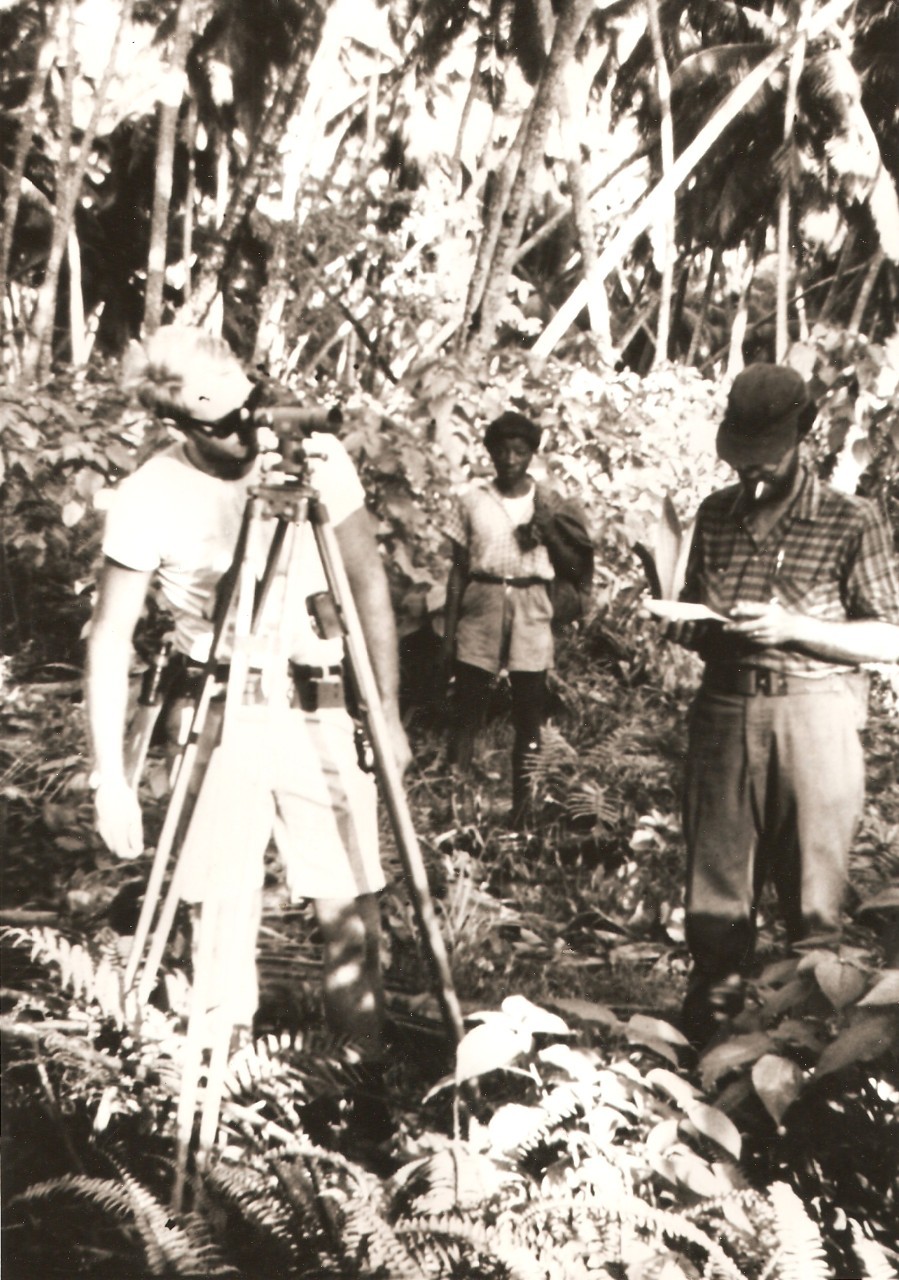
From the Collection
The U.S. Navy Seabee Museum has digitized its most requested archival materials to help our patrons and educate the community and posted them on the website. This site contains a wealth of materials on the Seabees, Civil Engineer Corps, and advance base equipment and materiel. Included are "born-digital" contemporary items, as well as historical material digitized from analog formats. The Museum is currently in the process of restructuring the website to make it easier for visitors to find what they are looking for by subject and geographic. Click here to check out more on the Seabees experience in Diego Garcia.
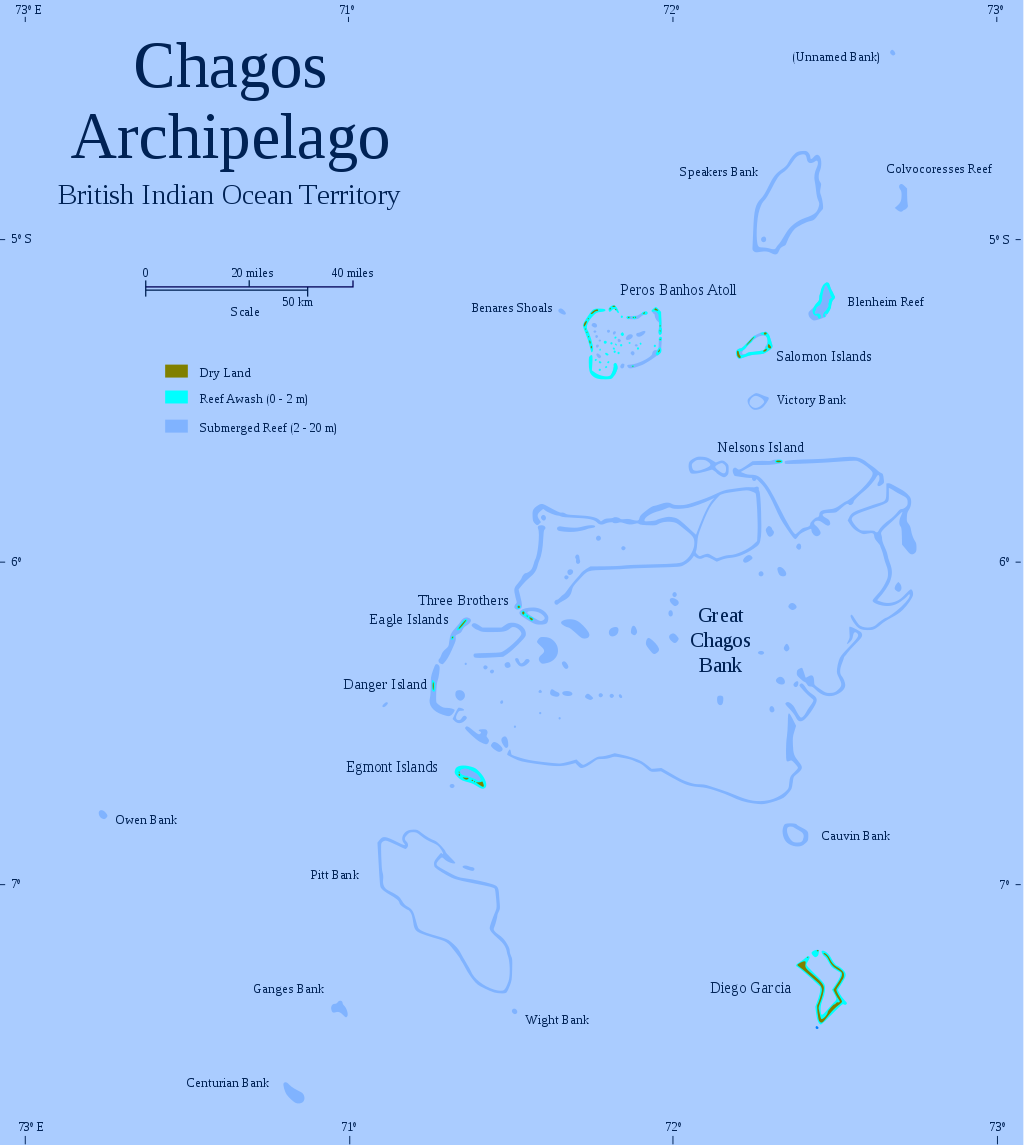
Seabee Corner
Last issue we asked: Do you know who is pictured in this photo?
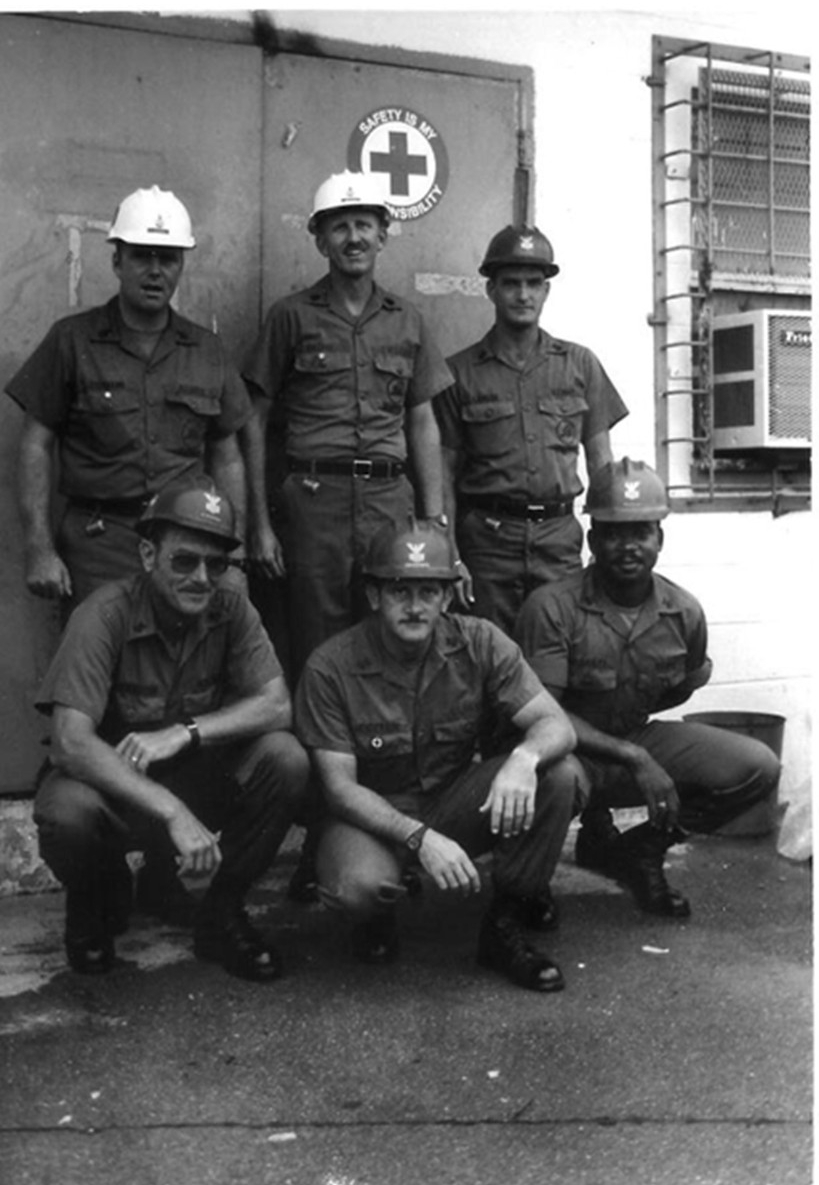
Within hours of sending out the last SeabeeGram, John Ellwood identified everybody in photo. The group is identified as follows: (Left to right bottom row) BU1 George Richardson, SW1 James Henderson, EO1 Steven McCauley; (Left to right top row) BUCS Kevin Eichmann, SWC Steven Watson, CE1 Todd Landon. BZ to Seabee John Ellwood for looking in your 1991 NMCB FOUR Deployment Book and helping the Museum find an answer!
The question for this issue is: If you could tell somebody only one story about Seabees, what would it be?
Tell us in 50 words or less.
Representative responses will be published in the November issue. Please submit your submissions to SeabeeMuseum@navy.mil no later than Friday, October 22nd.
Question for the next newsletter: the Museum with The museum staff found this in the photos related to Mount Pinatubo, but the most specific information on it is “Group – NMCB 4.” If you know who these Seabees are, please email the museum at SeabeeMuseum@navy.mil. We will share our findings in the next newsletter.
Connecting on Social Media
Follow the museum on Facebook, Twitter, and Instagram for On This Day in Seabee History, interactive activities, insights into museum operations, and other fun information!
USNSM Website: https://www.history.navy.mil/seabeemuseum
USNSM Facebook: https://www.facebook.com/seabeemuseum
USNSM Instagram: https://www.instagram.com/usnavyseabeemuseum
USNSM WordPress: https://seabeemuseum.wordpress.com
USNSM YouTube: https://www.youtube.com/user/SeabeeMuseum
USNSM Twitter: https://twitter.com/SeabeeMuseum
Seabee Historical Foundation
The SeabeeGram is published with support of the Seabee Historical Foundation (SHF). The SHF is the non-profit charitable partner of the U.S. Navy Seabee during Museum chartered to support the museum and its programs. For more information about the SHF, visit their website at www.seabeehf.org.
Contact Us
Museum Staff is always available to assist you with Seabee-related historical questions or museum operations questions.
General museum operations questions contact: SeabeeMuseumVisitor@navy.mil
Historical/reference questions contact: SeabeeMuseumArchive@navy.mil
Information about donating historical material contact: SeabeeMuseumCollections@navy.mil


